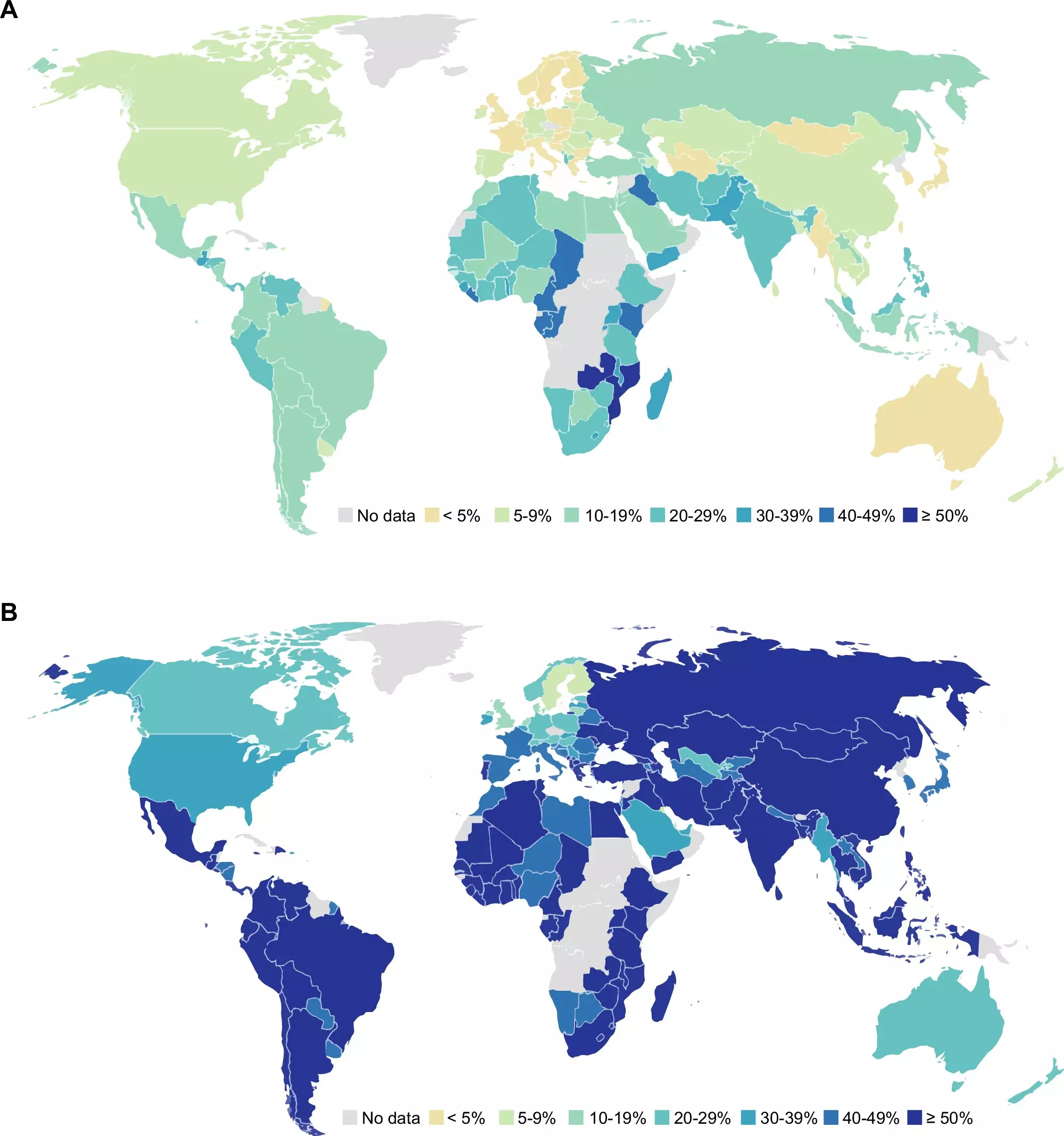A comprehensive study conducted by health experts from Northwestern University and the University of North Carolina at Chapel Hill has uncovered alarming projections regarding global perceptions of drinking water safety. According to the study, a staggering percentage—over half—of surveyed adults worldwide anticipate facing significant harm from their drinking water within the next two years. The research, detailed in the journal Nature Communications, provides critical insights into how perceptions about water quality can significantly influence public health and well-being.
The premise of the study, titled “Self-reported anticipated harm from drinking water across 141 countries,” emphasizes the pivotal role of perception in shaping behavior. Sera Young, a leading figure in the study, articulates a crucial observation: even if water quality meets set safety standards, public distrust can lead to adverse health and nutritional behaviors. The unexpected shift from tap water to packaged alternatives not only imposes a financial burden on individuals but also has detrimental effects on broader environmental and health aspects. This behavioral adjustment, driven by perceived safety concerns, illustrates a vicious cycle where mistrust exacerbates already existing inequalities in health and nutrition.
The research, which analyzed data from over 148,000 adults across 141 countries, identified specific demographics that exhibit higher levels of concern regarding drinking water safety. Notably, women, urban residents, individuals with higher educational backgrounds, and those experiencing financial strains were more likely to anticipate health risks associated with their water supply. This demographic intricacy underscores a noteworthy trend: the intersection of education, urban living, and economic instability appears to heighten anxiety about drinking water safety.
Interestingly, the study highlighted that perceptions of government corruption were more indicative of anticipated harm than traditional metrics such as national infrastructure or Gross Domestic Product. This revelation positions trust in governmental institutions as a critical pillar for public confidence in water safety. The implication is clear: even in regions where water services are adequately provided, a lack of belief in the system can lead to profound mistrust and skepticism among residents.
Even in a developed country like the United States, where access to safe drinking water is generally consistent, the study revealed significant levels of concern. A noteworthy 39% of those polled expressed fears of serious harm from their tap water. This statistic exemplifies the global nature of the issue, illustrating that even established systems can falter if public trust is not maintained. The haunting example of Flint, Michigan serves as a reminder of the devastating consequences that can arise from failing to protect water safety and the ensuing loss of public trust.
Joshua Miller, a doctoral student involved in the research, emphasizes the necessity of fostering public trust alongside ensuring access to safe drinking water. The challenge lies in the invisible nature of many water contaminants, which complicates the average person’s ability to evaluate the safety of their water supply accurately. Without transparent information and accessible testing, individuals are left to assess their water’s safety through unreliable means, such as anecdotal experiences or media depictions.
To combat the pervasive doubts about drinking water safety, the researchers propose several actionable strategies aimed at rebuilding public confidence. These include improving the accessibility of water testing services, translating test results for clarity, and replacing outdated infrastructure, such as lead pipes. Additionally, providing home filtration systems in contamination-prone areas can significantly mitigate health risks and enhance trust.
Aaron Salzberg, director of the Water Institute at UNC, underscores the essential nature of this research as a catalyst for pushing drinking water issues higher on the political agenda. By prioritizing these reforms within national development strategies, stakeholders can make significant strides toward achieving universal access to safe drinking water. This objective is not merely a matter of infrastructure but also a critical aspect of ensuring public health and nurturing a sense of security among citizens.
Addressing the complex perceptions surrounding drinking water safety is an intricate challenge that requires multi-faceted solutions. Trust in public services cannot be overlooked, as it plays a central role in how communities regard and utilize their drinking water supplies. As globalization continues to influence public health perspectives, understanding the nuances of water safety perceptions will be integral to fostering healthier populations worldwide. By addressing these concerns through informed strategies, there is hope for rejuvenating faith in drinking water safety, thus allowing individuals to nourish themselves and their families without fear.

